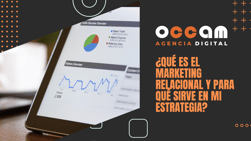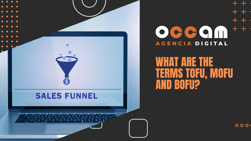Index Content
Realistically, we've been talking about Inbound here and Inbound there for a long time. That's the thing about being an effective and modern marketing strategy for businesses that's here to stay. Not only that, but we've also told you a few things about the role of video marketing, social media, the shift from Outbound to Inbound, etc. Nothing you don't know. Now, what would you answer if you were asked what Inbound marketing isn't? Huh?
Before you start thinking about it, let's give you some clues.
The antonyms of Inbound Marketing
have you ever wondered about it? Used to hearing about everything that is part of the Inbound universe, who would have thought about what is not part of this methodology? At Occam we have done it so that there is no room for doubt. Let's see what it's all about?
- Inbound is the power of attraction, not intrusion. It's about creating an emotional bond with users and engaging them naturally. Let them come to you, not go door to door trying to get them to open up. Stay out of their business and don't interrupt them. No one wants to be bothered at the wrong time. You'll generate the opposite of the desired effect. Say goodbye to hype and welcome the natural encounter.
- Strategies without automation: If you don't have marketing software yet? If you haven't jumped on the HubSpot CRM bandwagon, then you're not Inbound yet. With automation, companies are able to control their marketing more efficiently, track their impact in detail, and reduce costs and staff time.
- Strategies without the definition of a buyer persona. Remember that it is the semi-fictional representation of your potential customer's profile. The definition of the buyer persona should be done in the first steps of the relationship with a customer. It is the basis of your marketing strategy. Of all the actions you are going to carry out. If you don't know him, how are you going to empathise with him? Adapt your content, personalise it, contextualise it and throw yourself into this attraction party.
- is your only objective to sell more and more or to increase recruitment? Remember that this methodology is about the goals of a complete strategy, and not about widening the top of the funnel as much as possible. If you are thinking about being profitable in the short term, this is not your place. But if what you need is a strategy that gives results in the long term, for ever and ever, STAY. The present is today, but it passes quickly and comes with the future.
where is Inbound Marketing flying to?
Towards all sectors and companies, regardless of their size. It is also heading towards growth. Inbound is an arrow that indicates progress through the creation of content, personalisation, viralisation and analytics. It rolls tirelessly by the hand of the flywheel. It makes visible, captures and builds loyalty. It converts strangers into visitors, these into leads, sales opportunities into customers and, finally, into prescribers. It is a methodology with a past, present and future.
The concept was coined in 2005 by HubSpot co-founders Brian Halligan and Dharmesh Shah. Today, more than 85% of companies that use Inbound Marketing have increased traffic to their website in the first 6 to 7 months. In the coming years, digitalisation will continue to provide companies with a unique opportunity to make the most of the tools available to them. What is the ultimate goal? To optimise their results. To optimise their resources. To optimise the experience of both the company and the customer.
But..
how do you develop a strategy? Here are the steps to follow
- Defining your buyer persona.
- Buying cycle and conversion funnel.
- Attracting qualified traffic.
- Qualification of sales opportunities.
As we have mentioned, defining your buyer persona is the first necessary step to implement your Inbound Marketing strategy and, to do so, it is important to ask yourself about demographic variables (purchasing power, age), user behaviour (where they look for information, what concerns them), consumer habits and any specific aspect that defines your target.
Knowing which buying cycle they will follow is more important than you think, because depending on the stage they are in, their demands will be different. It is essential to know where they are in their buying cycle in order to offer them what they need at each moment. You know... you, as a company, must be prepared to satisfy them. Think about the tone, type and keywords of your content. And don't make the mistake of thinking that all leads are the same. To help you, you can use tools such as Lead scoring or Lead nurturing.
are you anthropocentric? Inbound Marketing is, because people are at the centre of everything.





